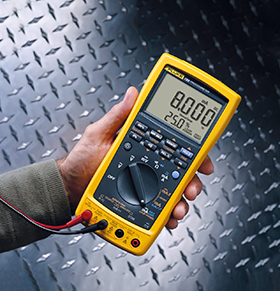

Valves, the actuators that move them, and the electronic circuits that control them, are all subject to the effects of ageing soon after they are installed. The valve seat wears not only from the repeated seating of the valve, but from the liquid or gas that passes through it. Depending on the application, a valve can be stroked from hundreds to tens of thousands of times over a one year period.
This amount of mechanical motion inevitably causes screws to reposition, springs to weaken and mechanical linkages to loosen. In addition, electronic components change value over time. The results are valves that don’t fully open or close, close prematurely, or operate erratically and cause improper regulation of the gas or liquid under its control. This is commonly referred to as ‘calibration drift.’
To keep a system operating properly, a good preventive maintenance programme that mandates periodic checks of valve positioners is required. When these checks reveal calibration drift, recalibration of the electronic valve positioner must be performed quickly. With the varied locations in which a valve can be installed and the difficulty in removing it, the equipment used to perform the checks must be brought to the valve positioner itself. Therefore, this ‘in-field’ tester must be portable, easy to use and rugged.
The tester, with signal sourcing, must simulate a controller connected to a valve positioner’s input. With Comtest’s ProcessMeter, the operator can set the positioner’s input current to a specified level and visually inspect the reaction of the valve’s position using the mechanical position indicator, the valve stem position or flow indicators. In addition, the ProcessMeter must continuously adjust the source current in a stepping fashion, allowing the user to check the valve’s linearity and response time.
The ProcessMeter is set up in the sourcing mode using the appropriate range of current for the positioner. The tester uses a separate pair of jacks to source current. First connect the test leads into the 24 V loop power mA output jacks. Next, select the 4-20 mA range by moving the function switch from Off to the first mA output position. With the test equipment properly set up and connected to the positioner, it can be determined if the positioner fully closes the valve at the 4 mA input current level.
Using the push buttons on the ProcessMeter, adjust the source current to 4,0 mA. Now press the Coarse Down button once to decrease the current to 3,9 mA. There should be no movement of the valve. In setting the point at which the valve starts to open, one would want to be sure there is no counter pressure by the actuator against the force holding the valve closed when there is 4,0 mA on the controller’s input. In a spring-to-close valve, there should be no pressure on the diaphragm. With a double acting piston actuator, there should be no pressure on one side of the piston.
The next check is with the valve at the next extreme: fully open. This is referred to as a span position check. Using the range buttons on the ProcessMeter, adjust the source current for a 20 mA reading and allow time for the valve to stabilise. While watching or feeling for valve movement, press the Coarse Up range button once to 20,1 mA. This movement should be as small as possible and can be adjusted using the span adjustment on the positioner. Using the coarse control of the ProcessMeter, adjust current up and down between 20,1 mA and 19,9 mA. There should be no movement of the valve stem from 20,1 to 20 mA and slight movement from 20 mA and 19,9 mA. For valves with linear action, linearity can be checked by setting the tester to 4 mA and then, using the % Step button, step the current to 12 mA (50%) and confirm the valve position indicator is at 50% travel.
The ProcessMeter brings all the necessary tools to the job site for checking and recalibrating electronic valve positioners. The tester not only simulates a current loop transmitter, but is a measurement tool as well. Along with the normal DMM measurements (DC/AC volts, DC/AC current and resistance), the tester can also measure frequency. Additional features include Min\Max, relative measurements, diode test and auto-hold. A feature rich product designed specifically for the loop process technician, the ProcessMeter also complies with the IEC 1010-1 standard for CAT III 1000 V environments.
| Tel: | +27 10 595 1821 |
| Email: | [email protected] |
| www: | www.comtest.co.za |
| Articles: | More information and articles about Comtest |
| Tel: | +27 10 595 1824 |
| Email: | [email protected] |
| www: | www.comtest.co.za |
| Articles: | More information and articles about Comtest |
© Technews Publishing (Pty) Ltd | All Rights Reserved